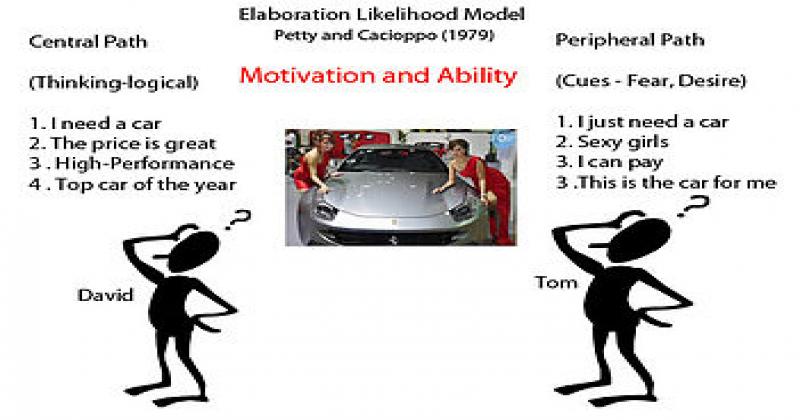Buyer Psychology Of Purchase Decisions
To really get thinking about the buyer psychology behind why people buy, here are some things to keep in mind (no pun intended). People make purchase

To really get thinking about the buyer psychology behind why people buy, here are some things to keep in mind (no pun intended):
People make purchase decisions rooted as much in emotional impulses as logical facts
The brain has two sides, and people often describe themselves as left-brained (logical and analytical) or right-brained (intuitive, subjective). The truth about your grey matter isn’t so black and white. Even if you might lean one way or the other, both sides of the brain still matter in your thought processes, and certainly in your buying decisions. We’re not robots, so we will never make purchase decisions based solely on logical factors, such as economics (cost-benefit ROI analysis) or politics.
Think about when someone buys a Ferrari. They might have seen a photo of the fire-red sleek machine and fallen in love with it instantly. Of course, they will then justify the decision by looking up mechanical specifications – the car’s horsepower, cutting-edge engine, aerodynamic design, safety record, maintenance requirements, etc. That’s both sides of the brain working in concert for this purchase decision.
Buyers have egos
When making purchase decisions for themselves, buyers will naturally think about themselves and what they stand to gain by buying. As a seller, this means playing to this ego and even stroking your buyer’s ego to make them more comfortable with the purchase decision. Think about addressing a buyer’s egocentric tendencies by answering this question from their perspective: “What’s in it for me?” When you can definitively and satisfactorily answer that question for them – before they even ask it – you will have gone a long way toward completing the sale.
Buyers have a greater commitment to fleeing losses than to seek gains
Pointing out what a buyer stands to potentially gain from buying your product requires a leap of imagination on their part – they have to picture themselves in a new and better place by having bought from you. This type of imaginative and creative leap isn’t always easy to take, and can be tenuous.
However, claiming that they will no longer suffer the existing pains that they currently do is much more grounded in reality, based on the very human notion of fleeing losses. They already have this very real pain point, something they live with on a day-to-day basis. Once they have the conviction that you relate to and understand this pain point, and that you have the power to remove it, they will be much more convinced.
Buyers are naturally suspicious
And why wouldn’t they be? Most sales reps have agendas of their own (i.e. to sell), and buyers should of course be suspicious that these are self-serving agendas that don’t necessarily benefit anyone but themselves. That’s why selling experts always preach the importance of establishing a relationship of trust and credibility. Consultative selling has emerged precisely to overcome these natural suspicion barriers of buyers and position the sales rep to not just sell something to them, but to actually help them.
Buyers respond psychologically to visual elements and stories
The logical side of buyers craves facts and figures – that’s why numbers (price, technical specifications) feature so prominently in brochures. Their psychological side? They relate more powerfully with visual components and stories of past successes.
They say a picture is worth a thousand words, and that certainly rings true for sales reps. Graphs and charts can go a long way in closing the buying gap. Meanwhile, stories of past successes resonate strongly with buyers because they can then picture themselves in the shoes of previous buyers, experiencing similar success. This is why case studies can pack an immensely powerful punch.
Buyers crave value
Psychologically, buyers are perked up by the prospect of somehow ‘winning’ the battle against the seller, by getting as much value as possible. Remember, value is not a fixed number – it is totally relative, depending on what the buyer has to gain and what they’re willing to pay. As a seller, you want to appeal to this psychological need to “win” by demonstrating as great a value as possible, relative to price. This isn’t necessarily just about ROI – there are a great deal of intangibles at play as well.
Buyers travel in packs
Buyers – and human beings in general – have a herd mentality, opting to move together in large groups. They will naturally be swayed by what a great number of their peers have done. This is why social proof has become such a powerful selling weapon today. Demonstrate to your potential buyer how others have bought and benefited, and they might start to see things from that other herd’s positive perspective as well.
Selling skills and the right tactics are certainly critical in being a successful sales rep, but so is having a keen understanding of the buyer psychology of purchase decisions and why people buy. Your reps aren’t selling to emotionless robots – they’re selling to real people, with feelings and emotions and impulses. Appeal to those, and they will be more successful and close more deals.

Categories
InformationAdvice
Afrikaans
Web Hosting
Motivation
Articles
Buyer Psychology Of Purchase DecisionsBeat the Facebook Algorithm
Landing Or Sales Pages
Effective Value Proposition
What makes your business newsworthy?
Value of your website
What we have to offer
The goal of the marketing group
Action Pages
GrowBig CorporationSpecial Offers
30% Off on WebsitesInternet Marketing
Tello Quadcopter Drone
Hisense FHD LED TV
Magic of a Hot Bath Gift



 December
December